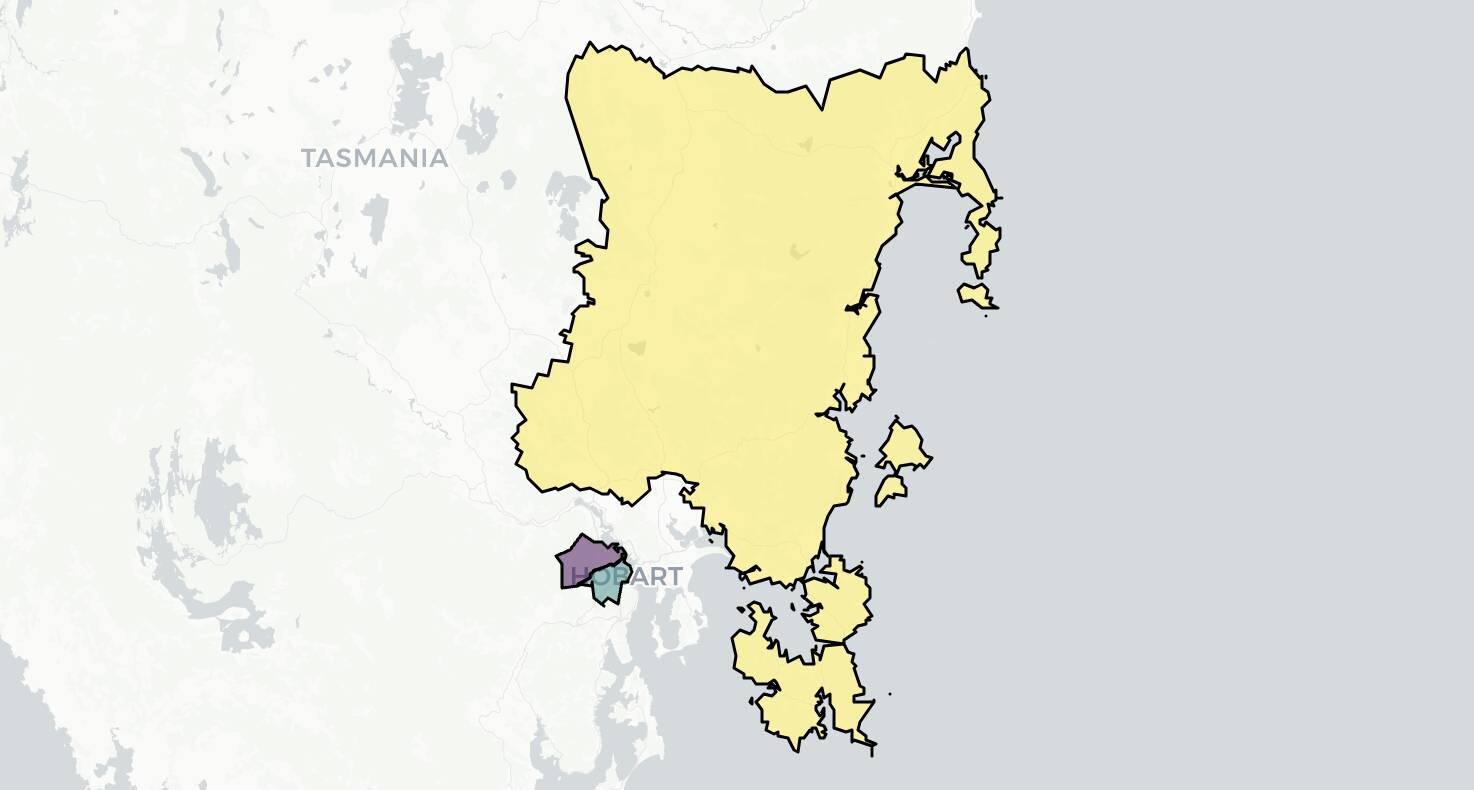Nominations have been declared for three Tasmanian Legislative Council elections, with polling day on May 4.
Tasmania’s upper house is never fully dissolved, with two or three of the fifteen electorates up for election each year over a six-year cycle.
This year, the seat of Hobart and the south-eastern rural seat of Prosser are due. The northern Hobart seat of Elwick will also hold a by-election to fill the last four years of Josh Willie’s term after his successful moving to the lower house.
The most interesting thing about these elections is the total lack of incumbents. Willie and Prosser MLC Jane Howlett have both vacated their seats to successfully take seats in the House of Assembly, while left-leaning independent Rob Valentine is retiring from Hobart.
My Legislative Council dataset dates back to 2007, and in that time we’ve never had three open seats in the same year. Indeed the only year when we had two was in 2011, when the three scheduled vacancies were joined by a by-election. Two of the four contests were lacking an incumbent.
I actually suspect it’s been a lot longer since there has been three open seats on the same day.
The open seats have led to quite large candidate fields in each electorate, although not quite at record-breaking levels.
We have seven candidates in Hobart, five in Prosser and four in Elwick.
The three electorates have quite different dynamics, with different mixes of candidates.
Prosser was very much a straight Labor vs Liberal contest in 2018, and it seems likely to go that way again, with Labor’s Bryan Green having been in the field for a long time, and has recently by joined by Liberal candidate Kerry Vincent, the mayor of Sorell.
The two Hobart-area contests are very much intra-Left battles, with Labor, Greens and centre-left independents showing up in both seats, but no Liberal candidates.
Hobart is the strongest part of Tasmania for the Greens, but it’s also the home of federal independent Andrew Wilkie. Wilkie and outgoing Hobart MLC Valentine have both endorsed independent Charlie Burton, while the Greens are running former Clark MP and former party leader Cassy O’Connor. Labor is running John Kamara, who performed respectably in Clark in March. The Greens have never won a seat in the upper house and this is probably their best chance. Hobart councillor John Kelly is the other prominent candidate, and probably the sole choice for right-wing voters, but isn’t likely to be a serious threat.
In Elwick, Glenorchy mayor Bec Williams is running as an independent, and can be broadly classified as centre-left. Williams is hoping to follow in the footsteps of her predecessor Kristie Johnston, who is an independent MP in the lower house for the overlapping seat of Clark.
Labor is running Tessa McLaughlin, and must be a strong contender in a seat won by Josh Willie with a majority of the primary vote in 2022.
The Greens are running Janet Shelley, and ex-Labor independent Fabiano Cangelosi are also running.
I’ll be returning to the Tasmanian upper house in the week before the election with some analysis of how the upper house has been changing, as parties have challenged the traditional independent domination in the Council.




The current makeup of the Legislative Council is seven independents, four Liberals and four Labor members. This means only one seat needs to change hands to end the Liberal-Labor deadlock.
The Liberals currently have no seats in Hobart, all of them are either Labor or independent-held, while Labor only holds one rural seat (Derwent). The seat of Launceston is currently held by an independent. The rural areas tend to also be independent with some exceptions, most notably the area along the Bass Strait that includes the city of Devonport.
In short: Labor seem to be strong in Hobart (holding three of the five seats in Hobart as well as the rural southern seat of Derwent), while the Liberals seem to be strong on the northern coast (holding three of the five seats touching the Bass Strait as well as the rural southeastern seat of Prosser).
Comments are closed.